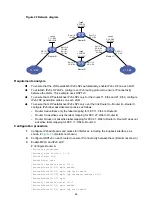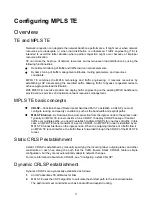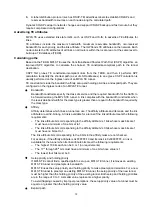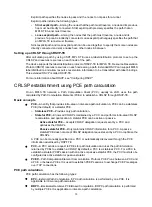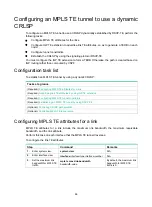
77
average output rate sampled during the adjustment time for new CRLSP establishment. If the new
CRLSP is set up successfully, MPLS TE switches traffic to the new CRLSP and clears the old
CRLSP.
You can use a command to limit the maximum and minimum bandwidth. If the tunnel bandwidth
calculated by auto bandwidth adjustment is greater than the maximum bandwidth, MPLS TE uses
the maximum bandwidth to set up the new CRLSP. If it is smaller than the minimum bandwidth,
MPLS TE uses the minimum bandwidth to set up the new CRLSP.
CRLSP backup
CRLSP backup uses a CRLSP to back up a primary CRLSP. When the ingress detects that the
primary CRLSP fails, it switches traffic to the backup CRLSP. When the primary CRLSP recovers,
the ingress switches traffic back.
CRLSP backup has the following modes:
•
Hot
standby
—A backup CRLSP is created immediately after a primary CRLSP is created.
•
Ordinary
—A backup CRLSP is created after the primary CRLSP fails.
FRR
Fast reroute (FRR) protects CRLSPs from link and node failures. FRR can implement 50-millisecond
CRLSP failover.
After FRR is enabled for an MPLS TE tunnel, once a link or node fails on the primary CRLSP, FRR
reroutes the traffic to a bypass tunnel. The ingress node attempts to set up a new CRLSP. After the
new CRLSP is set up, traffic is forwarded on the new CRLSP.
CRLSP backup provides end-to-end path protection for a CRLSP without time limitation. FRR
provides quick but temporary protection for a link or node on a CRLSP.
Basic concepts
•
Primary
CRLSP
—Protected CRLSP.
•
Bypass
tunnel
—An MPLS TE tunnel used to protect a link or node of the primary CRLSP.
•
Point of local repair
—A PLR is the ingress node of the bypass tunnel. It must be located on
the primary CRLSP but must not be the egress node of the primary CRLSP.
•
Merge
point
—An MP is the egress node of the bypass tunnel. It must be located on the primary
CRLSP but must not be the ingress node of the primary CRLSP.
Protection modes
FRR provides the following protection modes:
•
Link
protection
—The PLR and the MP are connected through a direct link and the primary
CRLSP traverses this link. When the link fails, traffic is switched to the bypass tunnel. As shown
in
, the primary CRLSP is Router A—Router B—Router C—Router D, and the bypass
tunnel is Router B—Router F—Router C. This mode is also called next-hop (NHOP) protection.



